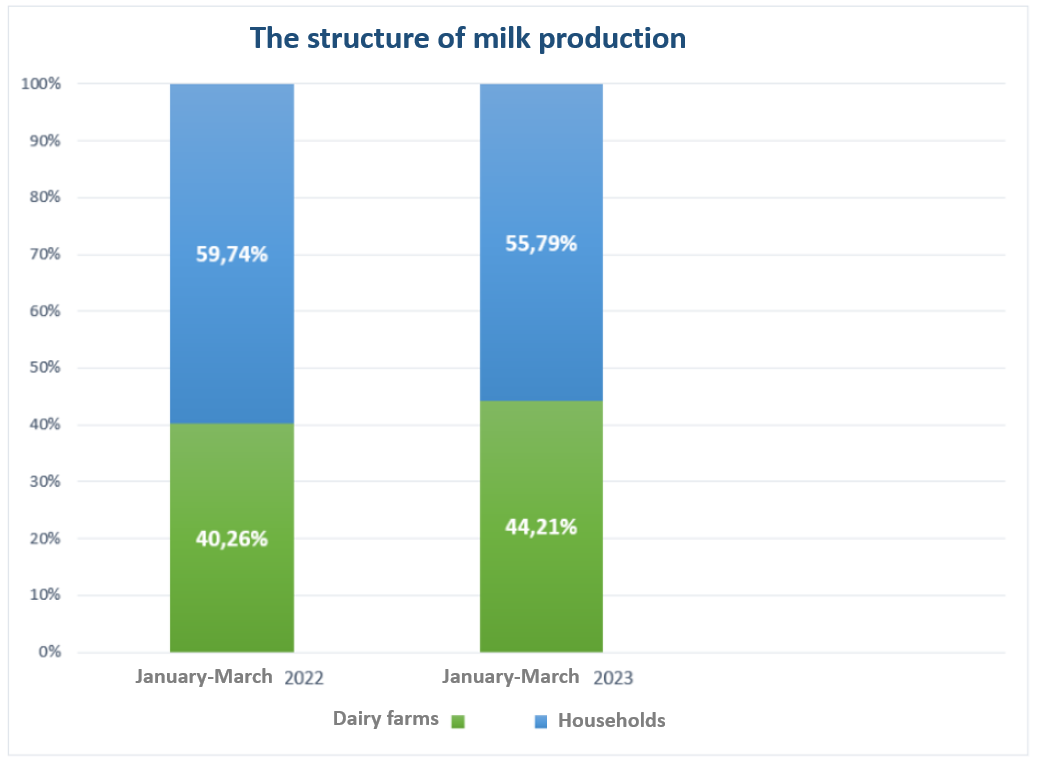Despite the challenges of the ongoing russian-Ukrainian war, domestic producers continue to work on the productivity of animals, the quality and safety of raw milk.
The analyst of the Association of Milk Producers Georgii Kukhaleishvili reports.
According to preliminary calculations and expectations of the State Statistics Service, in the first quarter of 2023, all types of farms (industrial farms and homestead sector) produced 1 million 425 thousand tons of raw milk, which is 8.5% less than in 2022.
However, industrial dairy farms, according to preliminary estimates, even increased production volumes compared to the same period last year: 629.8 thousand tons (627 thousand tons last year) - so far a modest +0.44%. But at the same time, the share of industrial milk in the total volume of production increased: 44.2% against 40.3% on the same date last year - including due to a significant reduction in production in the industrial sector.
Meanwhile, the households sector significantly decreased: the volume of milk production amounted to 794.9 thousand tons or -14.6% (930.5 thousand tons last year). Similarly, the share of milk from private farms in Seden in the total volume of production decreased: 55.8 against 59.7%.
The production of raw milk at industrial enterprises is at a relatively stable level due to the activation and increase of production by those
Industrial dairy farms located in relatively safer regions or due to previously relocated dairy farms. Meanwhile, the presence of the homestead sector in the milk market has significantly decreased, because families from the war-affected territories were either forced to leave their homes and livestock in order to save themselves, or due to the physical impossibility of providing care for animals during shelling and hostilities, they were forced to let them go for meat. , or ended up in the territories occupied by the Russian invaders, from where raw materials do not enter the settlements controlled by Ukraine.

Press service of the Association of Milk Producers



